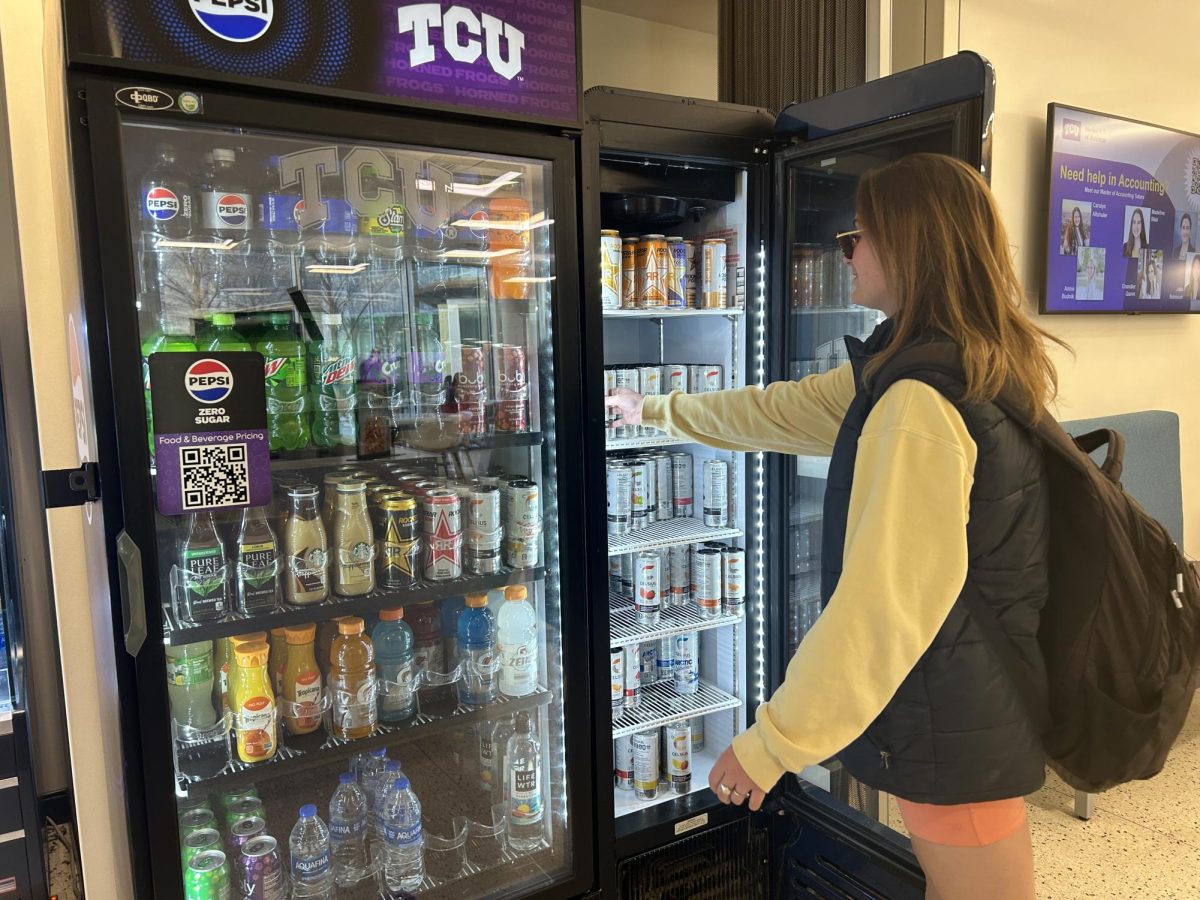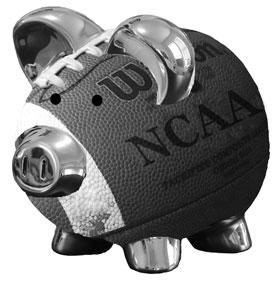A talented high school football player is promised a full scholarship to a top-tier Division I school.All his problems are over, he thinks. He will go to college, get a degree, take a free ride toward a four-year education and, if he’s really lucky, he’ll go on to play in the NFL.
Sounds like a good deal: free room, board and tuition, the opportunity of a lifetime – all for doing something fun. Nothing but easy street ahead.
Not necessarily, said Ramogi Huma, founder of the Collegiate Athletes Coalition, a nonprofit group dedicated to promoting the rights of NCAA athletes.
Huma, a Division I-A football player at UCLA from 1995 through 1998, said students on sports scholarships often get a little less than they bargained for when they go to college.
Huma said some college athletes can expect millions of dollars in the future, and generate huge sums of money for their schools and the NCAA while they’re playing, but are left to struggle for some of life’s simple things while in school.
“We’re not talking about extravagant living,” Huma said. “We’re talking about deodorant, phone bills, things like that.”
The coalition has already had a hand in eliminating unfair and unsafe NCAA standards, Huma said. Since the group’s inception, the NCAA has increased death benefits paid to the families of athletes who die during athletically related activity, lifted restrictions that limited insurance coverage and eliminated a cap on off-season income unrelated to athletics.
“Really, we’ve just exposed the NCAA and their practices and rules that put athletes in jeopardy,” Huma said.
Now, Huma said, the coalition will work to ensure that students promised “full ride” scholarships will actually have their full expenses covered while in school.
Huma said the NCAA limits scholarships to cover only room, board, tuition and fees, and fall $2,000 to $3,000 short of meeting the estimated cost of attendance at any given university.
TCU athletics director Danny Morrison confirmed that by NCAA rule, schools cannot provide athletic scholarships to match the full estimated cost of attendance.
The estimated cost of attendance at TCU for the 2005-06 school year is $31,996. By rule, athletes on full scholarship would only get the $28,220 needed to cover room, board, tuition and fees. Travel expenses, school supplies and books would not be covered by the scholarship, Morrison said.
Morrison said student-athletes in need of additional money have access to Pell grants, a form of need-based federal student aid available to all students.
Mike Scott, director of financial aid, said scholarship student-athletes have access to Pell grants and student loans through the Free Application for Federal Student Aid. But he could not put a dollar amount on financial awards to athletes through the FAFSA program.
In addition to the grants, Morrison said, the NCAA also supports two funds that can be used by athletes for expenses that arise and are not covered by scholarship dollars.
Marcy Girton, associate director of athletics, explained the two NCAA-sponsored funds.
Girton said the funds can be used, pending the approval of the associate commissioner of the Mountain West Conference, to help needy athletes buy clothing, extra school supplies or anything else considered an important part of a student’s education or well-being, even if the matter is unrelated to athletics.
“Those funds are only allocated in a direct benefit to student-athletes,” Girton said. “Let’s say that we have a student-athlete who has a really bad dental problem, but it’s not athletically related. They could go through sports medicine to have some dental work done through that fund.”
Morrison said the average Division I-A school spends $50,000 per athlete.
“If you looked at that and said, ‘Well, what if you had a job where somebody was paying those kinds of dollars?'” Morrison said. “That would be a pretty nice entry-level job.”
Nebraska state Sen. Ernie Chambers said he thinks universities are getting more than a fair return on their investment.
“The players are the only ones who consistently generate money, who consistently give 100 percent,” Chambers said.
Chambers has introduced legislation several times that calls for paying of a stipend to Nebraska’s football players if three of the six other states that make up the Big 12 Conference approve similar legislation.
“In Nebraska, and in most states, inmates are paid,” Chambers said. “Everybody who does anything is paid for it. But somehow, when I talk about giving fair compensation to the players, the idea of paying becomes evil.”
Josh Centor, a spokesman for the NCAA, would only respond to questions by e-mail. He said student-athletes are students trying to get an education and should not be paid sportsmen.
“Professional athletes are paid to do a job,” Centor said. “That is not the collegiate model, where playing sports is neither a job nor the primary reason for being on campus. And, that is why student-athletes are amateurs. Philosophically, pay for play is perfectly fine for professional sports and perfectly wrong for intercollegiate athletics.”
Chambers said players are used and abused, lied to about there reasons for being at the institution and are promised an education they will not necessarily receive.
“They’re not guaranteed an education,” he said. “What they’re guaranteed is an opportunity to participate until their eligibility is used up.”
Huma said recruiters often promise students five years of full funding for schools, but NCAA rules prohibit schools from guaranteeing a five-year scholarship.
“(Recruiters will) come in, they’ll smile, they’ll say, ‘Everything is taken care of,'” Huma said. “Everything is not taken care of.”
Schools will often pull scholarships if a player gets injured, Huma said.
Chambers sponsored a successful bill in Nebraska that made pulling scholarships from injured athletes illegal.
“If you’re not going to pay them as employees, then we ought to protect them as scholars,” Chambers said.
He said athletes behave like professionals, even if they are not classified as such.
“These players not only give a tremendous amount of time, but they also risk crippling injury and even death itself,” Chambers said.
Huma said athletes know they are putting their bodies at stake when they sign on to play in Division I, and that he still suffers from a hip injury sustained his junior year of college.
He said football players devote 40 to 70 hours a week to football, despite an NCAA rule that says student-athletes are only allowed to spend 20 hours a week involved in athletics.
“The NCAA has a so-called 20-hour-a-week limit,” Huma said. “It’s common knowledge that there’s no teeth in that rule alone.”
He said a lot of time spent for football does not count toward the 20-hour limit.
“If you have a 3:30 game, you’re not out there doing your homework,” Huma said. “You’re in meetings all day.”
Huma, however, said he is not interested in paying student-athletes, but rather only in seeing that they are treated fairly in light of the revenue they generate for administrators. However, he said he understands where the pay-for-play argument comes from.
“Morally, these players are unique in that they’re generating a combined total of almost $4 billion a year,” Huma said. “Realistically, the way college sports has evolved, a lot of that money goes to support a lot of other sports.”
Chambers said he wants to see a “super conference” created for big schools that generate a lot of athletic income, and pay only the super-conference athletes. He said football should become an extracurricular activity at schools outside of the super conference.
Until then, Chambers said, “greedy administrators” will continue to exploit student-athletes for millions of dollars.
“That is what always happens when money is the driving force, and money always drives big-time college athletics,” Chambers said.
But Morrison said he believes student-athletes come out on top in the situation.
“I look at it as somebody that comes to TCU gets a fantastic education,” Morrison said. “We all know what that means economically over the next 40 years.





